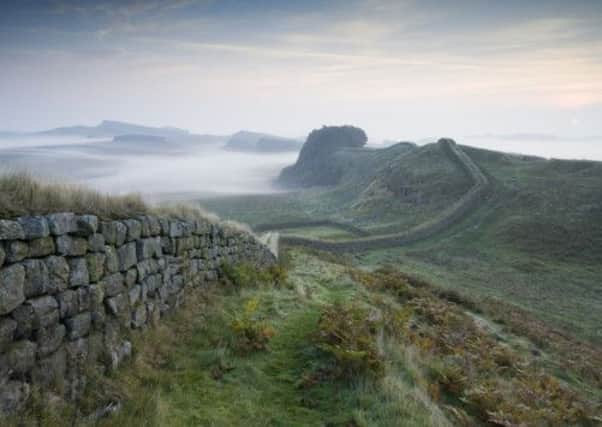Comment: Anti-independence rumours cross the line


Welcome to Sweden, pings the message on my mobile phone. I am slightly suspicious because we have not long left Copenhagen’s smart central station and I’ve been looking out hopefully for signs that we’re about to cross the border – such as 6ft 3in blond border guards, in uniform, with steely-blue Nordic eyes and stern demeanours.
But it seems I have, indeed, missed the key moment. Despite looking very hard, there’s not a patrol guard – blond, uniformed or otherwise – anywhere, nor even a sign or security post. “Yes, we’re already in Sweden,” confirmed the white-haired woman sitting opposite me. “The border with Denmark is halfway over that bridge we just crossed. Did you think you’d need to show a passport? Haha!”
Advertisement
Hide AdAdvertisement
Hide AdI wanted to protest that I knew I didn’t need to show a passport. That’s why I was here: to reassure myself that – despite suggestions by those opposed to an independent Scotland – it is perfectly possible to establish political boundaries, without imposing geographical barriers.
It’s easy for those who travel frequently in Europe to laugh off mischievous rumours that an independent Scotland would be separated from our English neighbours with some kind of gigantic blockade bisecting the land from coast to coast.
When Scottish Secretary Michael Moore suggested in a speech last month that the muddy farm tracks of rural Northumberland would be subject to border patrols if Scotland became independent, it seemed to many of us he must be describing a Dad’s Army-style farce, not attempting to make a serious political point. His vision certainly did not reflect the reality of border life in any country I have ever travelled into.
But for those who travel infrequently, or who usually fly rather than make land crossings, the concept of moving between neighbouring countries without having to show any form of identification or even stopping at the border can be hard to envisage.
So I selflessly decided to spend a few days in Scandinavia travelling up the coast from Copenhagen in Denmark to Oslo in Norway via Gothenburg – Sweden’s second largest city – to find out how cross-border travel between an independent Scotland and England would be likely to work in practice.
While the Nordic countries treasure their political and financial independence from one another, they also recognise the benefits of close cooperation.
Latest figures from the Nordic statistical database, Stadnord, for example, show that in 2009, just over 20,000 people living in Sweden (population 9.45 million) commuted to Denmark for work, and some 28,000 did so to Norway.
That’s in addition to the thousands more who regularly cross the border to take advantage of cheaper shopping or to visit relatives, such as the woman opposite me from Gothenburg who frequently visited her daughter in Copenhagen.
Advertisement
Hide AdAdvertisement
Hide AdThe main reason for those commuting out of Sweden for work being higher than those travelling in (around 1,100 from Denmark and just over 800 from Norway in 2009) is that at the moment the Swedish economy is weaker than that of its neighbours so wages are relatively lower.
The Norden website, which covers issues of Nordic cooperation, describes in Scandinavian terms what would be equally applicable between an independent Scotland and England: “The joint labour market has allowed the Nordic countries to cope with cyclical fluctuations and has enabled them to develop more positively than would otherwise have been the case. Exchanges of labour are still important today, especially in the border areas.”
This is exactly the kind of beneficial situation we could look forward to between an independent Scotland and England – one where neighbouring independent nations with political and economic autonomy can best look after their own needs while working in close cooperation with each other to boost both countries’ interests, sharing skills, business and knowledge.
After a couple of days in Gothenburg where my inquiries about all kinds of services and facilities were greeted by the common refrain: “It’s Sweden, it’s free!” I was reluctant to leave. But in pursuit of a further border-crossing experience I boarded the bus to Oslo.
And so at last to a border that felt like a border – well, just about. The motorway signs overhead divided the lanes according to a green circle or a red circle and indicated a turn-off lane for trucks carrying goods (presumably those from outside the EU) which are subject to customs duty.
The rest of us, including the Norwegian cars piled high with Swedish shopping, just sailed on past the customs area where haulage vehicles were parked outside long low storage buildings. We came to a series of concrete speed inhibitors and the vehicles slowed down. We passed a row of what looked like toll booths without the toll collectors, then picked up speed again as we entered Norway.
The bus didn’t even stop. That was it: less hassle even than a toll bridge. I could see what looked like speed cameras above the booths, so I presumed the bus’s registration plate had been photographed, but again there was not a guard in sight.
After independence, our primary focus will and should rightly be on what happens here in Scotland, but suggestions that political and fiscal autonomy will equate to isolation and barriers between movement of people and goods between here and England are nonsensical.
Advertisement
Hide AdAdvertisement
Hide AdThe next time someone tells you that you’ll have to show your passport when travelling from an independent Scotland to England you can point out that if that was so, it would be the only crossing in Europe where you’d have to do it.
• Fiona MacGregor is a writer and Yes campaigner